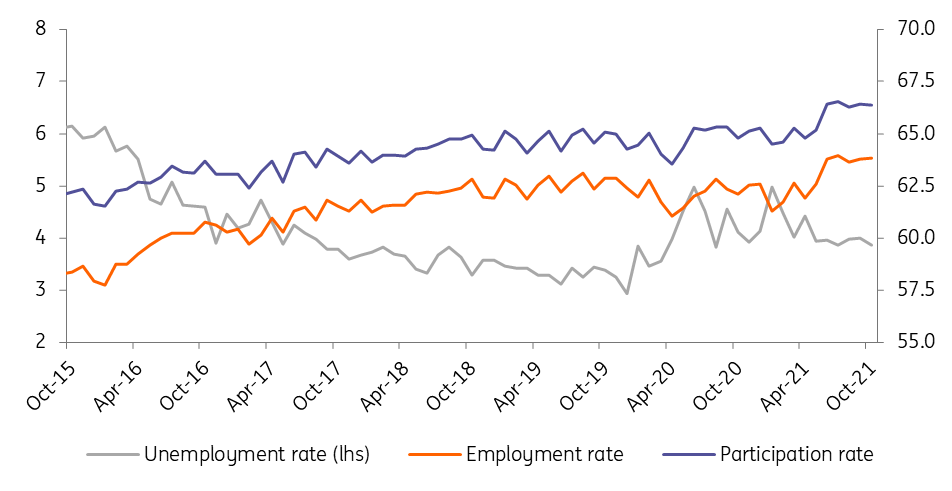Stubborn long-term joblessness clouds Hungary’s unemployment progress
Hungary's main labour market indicators are showing stability. But a rising share of long-term joblessness means more positive gains are likely to be increasingly difficult
| 3.9% |
Hungary's unemployment rateING forecast 3.9% / Previous 4.0% |
| As expected | |
Hungary's latest labour market statistics look like a copy-and-paste from the previous five months. Clearly, the country's labour market is stable. The unemployment rate came in at 3.9% in October. In fact, this figure's barely moved for much of this year.
There is some change in the number of unemployed, as there was a substantial decline from the previous month. However, it's too early to light the fireworks as the 188,500 people looking for work roughly matches the data from May and July. When you look at the details, however, there are some very interesting conclusions.
Labour market trends (%)

The number of labour market participants decreased by 5,000 compared to the previous month. Half of this change is related to the increase of 'inactives' (those who are leaving the labour market) and the other half is due to the declining population aged between 15-74. The number of unemployed decreased by 6,200 MoM with employment rising by only 1,200 MoM. Against this backdrop, the decline in the unemployment rate was mainly due to those leaving the labour market (in one way or another) and not because they were hired to do jobs. We need to keep watching how this unfolds, not just the headline unemployment reading, as it can drop for a 'wrong reason' too.
For the near future, we don’t expect the fourth wave of Covid-19 to generate significant labour market distortions. This means that the labour market improvement can continue at a very slow pace. The reason for the very modest improvement is twofold. First, the potential labour reserve in Hungary is depleting. Second, the group of unemployed is becoming less and less employable, as the proportion of long-term unemployed (i.e. those who have been unemployed at least for 12 months) is increasing and has already reached the pre-crisis ratio.
Long-term unemployment

Labour shortages caused both by skills and geographical mismatches are unlikely to disappear in the short run. However, we still see the unemployment rate shrinking to 3.8% by the first quarter of next year as a growing labour shortage may once again force businesses to train or re-train the hard-to-employ workforce and pay some bonuses (or give other benefits) for longer-distance commuting.
This publication has been prepared by ING solely for information purposes irrespective of a particular user's means, financial situation or investment objectives. The information does not constitute investment recommendation, and nor is it investment, legal or tax advice or an offer or solicitation to purchase or sell any financial instrument. Read more
Download
Download snap